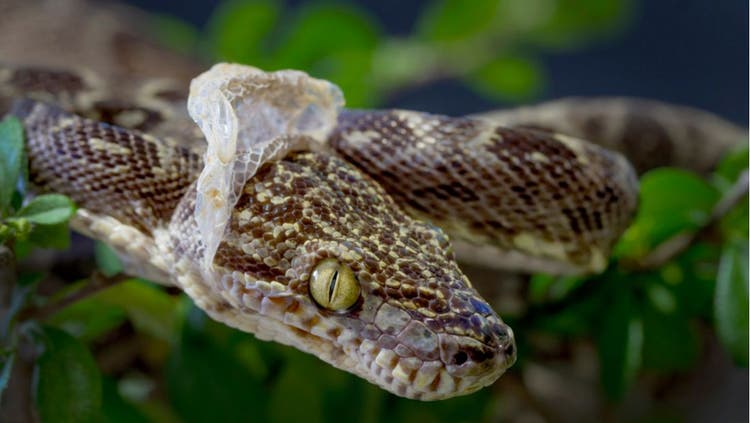
Dysecdysis – Shedding Problems
Throughout their lives, reptiles shed their skin. This is a normal event and, if kept in the proper environment, most reptiles have no problems. In snakes, the shedded skin is often removed in a single piece. In many lizards, skin is shed is pieces. Turtles and tortoises intermittently shed scutes and skin.
For snakes, a normal typical shed usually takes about 7 to 14 days. The skin becomes dull and a whitish cover develops over the eyes. The snake begins rubbing against rough objects in the cage to begin removing the shedded skin. With time, the skin is removed as one long inside-out piece.
A problem during shedding is considered a symptom of an underlying problem and not a disease in itself. Usually involving snakes, there are a variety of things that can cause an abnormal shed. Finding the problem and correcting it is crucial in maintaining a healthy snake.
Most shedding problems are due to poor husbandry and inappropriate management. Handling the snake during a shed can easily cause dysecdysis (the medical term for abnormal shedding), which may lead to permanent skin damage. Other causes of abnormal sheds include poor nutrition, low humidity and a lack of furniture or objects that the snake can use to rub against to remove the skin.
What to Watch For
- Eye caps retained
- Sores on nose from persistent rubbing
- Partially removed shedded skin\
Treatment
- Determining and correcting the underlying cause of the abnormal shed, such as better nutrition or refraining from handling, will help the snake return to normal for the next shed. But, in the meantime, you will need to take care of the current shedding problem.
- Do not pull the attached skin; this can cause serious injury. The best thing to do is to soak the snake in warm water. Be very careful not to have too much water in the container. Never leave a soaking snake unattended; snakes can drown. For large snakes, wrap him in a wet towel. The snake can use the towel to rub off the shedded skin after becoming moist enough.
- The eye caps are an important part of shedding. Eye caps form as a protective layer covering the eyes and prevent corneal damage while the snake rubs his face to remove the shed. If you are not sure if your snake has shed his eye caps, thoroughly examine the shedded skin. The caps usually come off attached to the facial skin.
- In dysecdysis, these eye caps, or spectacles, may be retained. If left in place, significant eye damage can occur. This is the part of dysecdysis that can be the most difficult to treat. Extreme care must be used in removing retained spectacles to avoid permanent eye damage or blindness. It may be best to consult your veterinarian for help in removing retained eye caps.
- With experience, eye caps can be removed easily by gently placing cellophane tape on the eye cap and slowly lifting the tape. The eye cap often comes off with the tape. If this does not work, consult a reptile veterinarian. Additional, more extensive procedures may be needed to remove the retained eye caps.
Preventative Care
- The best way to prevent dysecdysis is to make sure you are providing the proper environment. Adequate humidity and nutrition are very important. If husbandry is adequate and shedding problems continue, an underlying medical problem should be inspected. Usually, once the underlying problem is corrected, shedding returns to normal in two to three cycles.